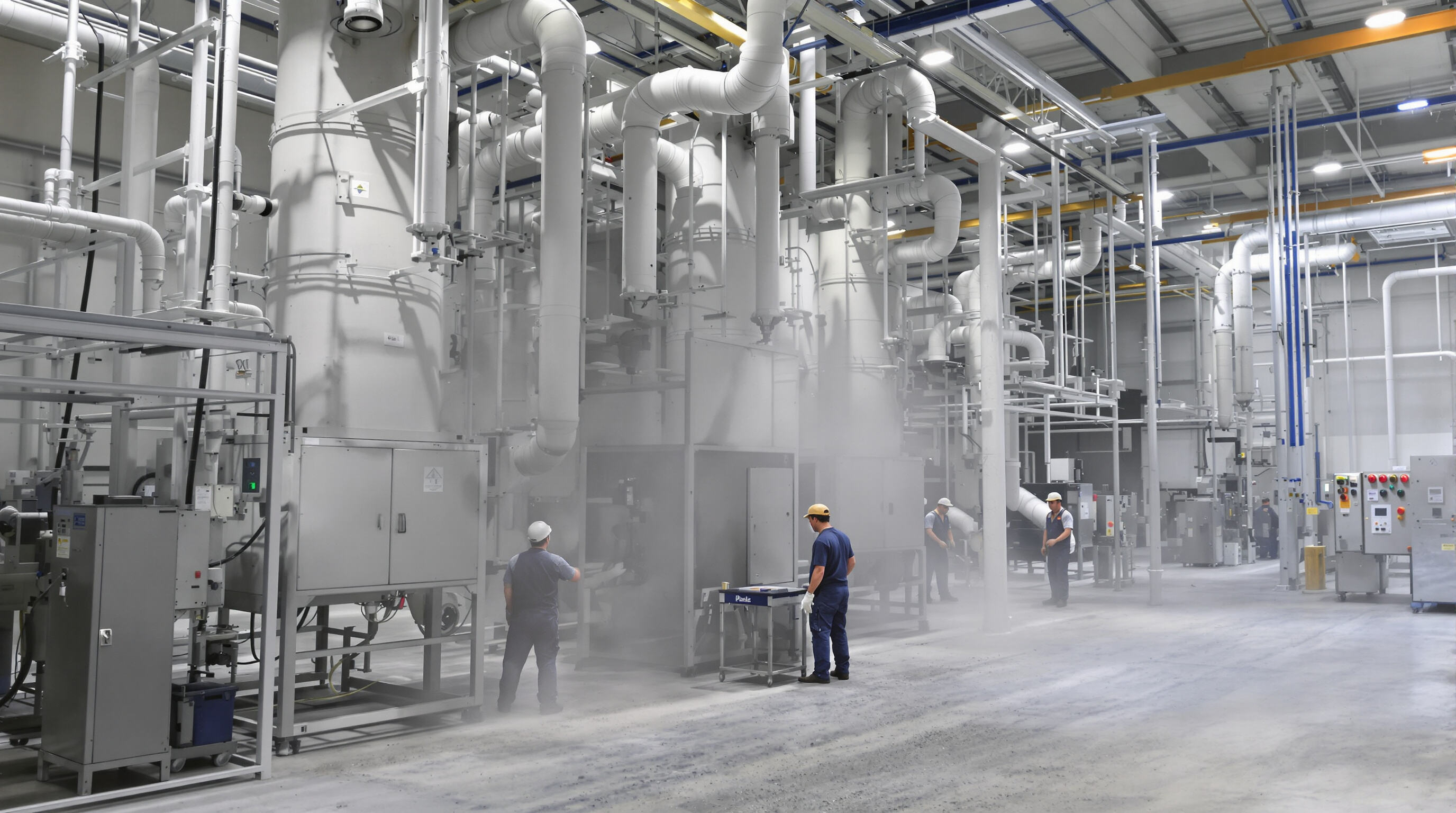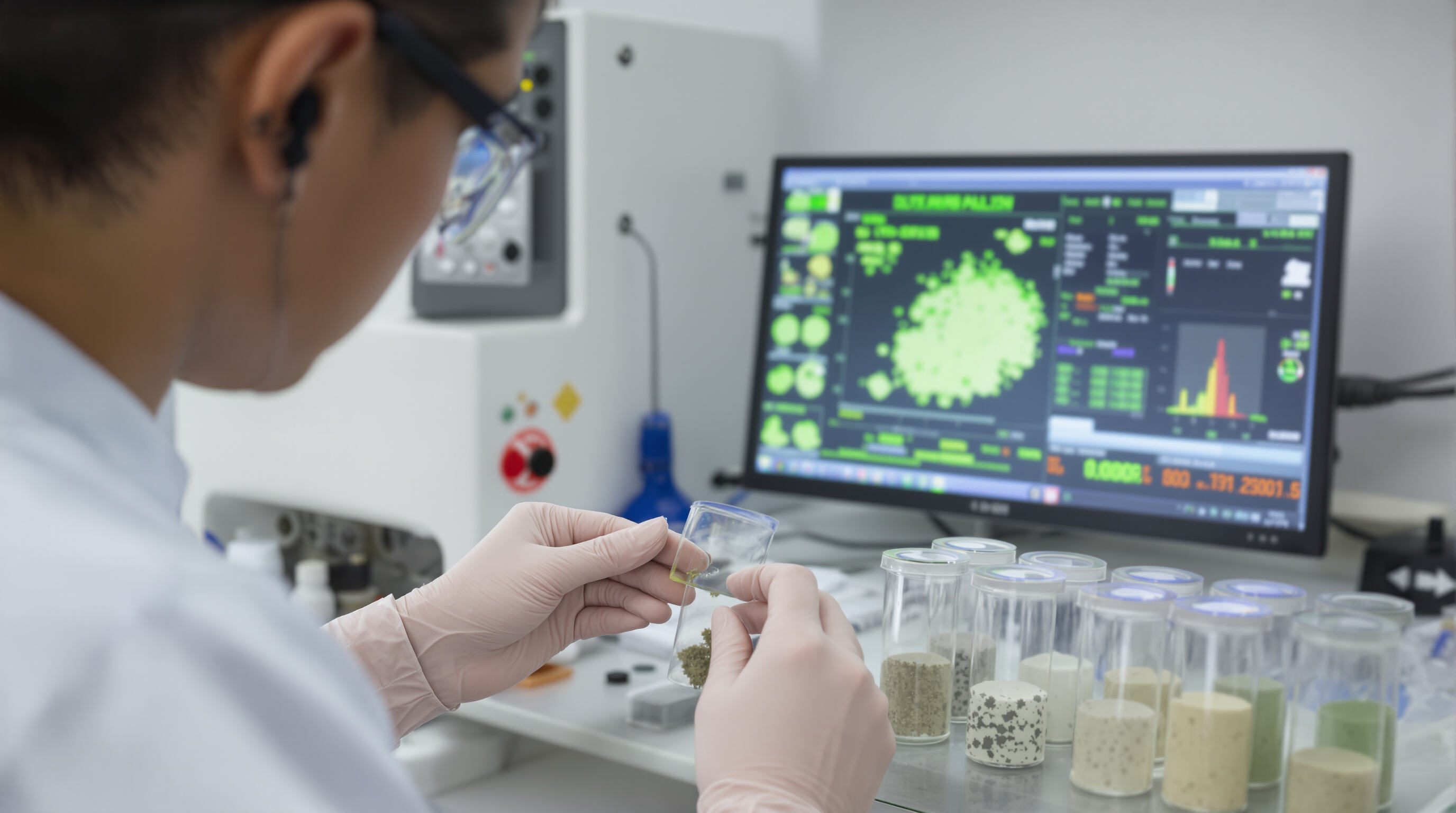
Dust filters used in industry settings work by trapping and eliminating harmful particles from the air before they can get to workers. This helps cut down on their contact with dangerous stuff like silica dust, metal bits, and other toxic materials floating around workplaces. The best ones use multiple stages of filtration along with containment features, which makes them really effective at grabbing tiny particles. Some models boast about being able to catch almost all particles down to 0.3 microns in size, something mentioned in the OSHA Technical Manual from 2023. Take a look at factories that switched to cartridge style filters. They saw a massive drop in silica levels - around 82% less than what was measured when there were no filters installed. Recent studies on workplace safety back this up, showing just how much difference proper filtration can make for worker health.
Breathing in industrial dust over long periods can cause some pretty bad health problems including silicosis, COPD, and even lung cancer. According to a recent study published in Thorax (2024), workers at metal fabrication plants where dust isn't properly controlled are almost twice as likely to develop obstructive lung diseases compared to those in better maintained environments. Dust filters remain the main way companies try to tackle this issue, but when things get really bad, OSHA regulations demand extra protection measures such as wearing N95 masks for anyone exposed above safe levels. Putting these methods together seems to work pretty well though. Field data from NIOSH shows around a 73 percent drop in sudden exposure cases when both approaches are used simultaneously.
Sustained use of high-efficiency dust filtration leads to measurable improvements in long-term employee health. Facilities maintaining PM2.5 levels below 12 ¼g/m³ report:
Modern systems integrate real-time air quality monitoring with automated filter adjustments, ensuring compliance with ACGIH® threshold limit values (TLVs) and fostering healthier, more productive workplaces.
Under 29 CFR 1910 Subpart Z, OSHA sets firm limits on worker exposure to dangerous substances including silica dust, metal fumes, and wood particles. According to the General Duty Clause, businesses need to put engineering controls in place, like those industrial dust filters we see in many workplaces, so air quality stays within safe levels set by PEL standards. Take silica for instance. OSHA has established a limit at 50 micrograms per cubic meter over eight hours, which means companies working with materials containing silica must install HEPA filtered systems to collect dust properly. And let's be honest, nobody wants to deal with the consequences of non compliance either. Fines can run around $14,502 per violation these days according to recent data from 2023, but the real cost goes way beyond money when worker health is at stake.
The Environmental Protection Agency sets strict rules through its National Emission Standards for Hazardous Air Pollutants (NESHAP) found in 40 CFR Part 63. These standards control how much particulate matter comes out of industrial operations. Certain sections of these regulations, specifically Subparts MM and OOOO, demand that facilities achieve over 99% efficiency in capturing pollutants during high risk activities. When a facility releases more than 12 tons of PM2.5 each year, it needs to put in place either baghouse systems or cartridge dust collectors along with ongoing monitoring equipment. The penalties for breaking these rules are serious stuff too. Companies caught violating them face daily fines reaching as high as three hundred thousand dollars according to EPA data from 2022. We've actually seen this happen before with several wood product companies getting hit when their emissions went beyond allowed levels.
The NFPA 660 standard brings together various safety measures工业安全规章,爆炸防护标准,包括《DHA》(Dust Hazard Analysis)和一些爆炸参数设定。根据Kst值超出200 bar·m/s的爆炸等级(常见于行业规范),同时还包括NFPA 68(爆炸压力标准)和NFPA 69(防爆方案标准)相关规定。此类标准覆盖工厂高风险环境,确保爆炸危险有效控制在70%。工业安全极大依赖这些标准的制定,并通过这些规范减少事故爆发的概率。

Getting good at hazard assessment starts with proper dust testing first. The size of those particles matters a lot for two main reasons: whether they can be breathed in deep into lungs and if there's any chance of explosion. Dust particles smaller than 420 microns pose serious problems because they stay airborne longer. Then there's the shape factor too. Angular shaped dust behaves completely different compared to round particles when it comes to how they move through air and get caught in filters. Sticky dust tends to cause all sorts of headaches by building up inside duct systems over time. And don't forget about hygroscopic materials either since these absorb moisture which creates additional fire hazards. Most experienced technicians will tell you that running simulations based on actual working conditions gives much better insights into how dust moves around and what kind of filtration system would work best for specific situations.
Explosion risks are quantified using standardized metrics:
These parameters inform ventilation design, suppression thresholds, and explosion protection strategies in high-risk areas.
The Dust Hazard Analysis (DHA) mandated by NFPA 652 looks at explosion risks in several ways including collecting dust samples, checking equipment conditions, and finding possible sources of sparks or heat. Testing for static electricity buildup is another key part of the process since this often points out weak spots in facilities. Gap analysis comes into play too, helping spot where protective measures might be missing altogether. When engineers get these results, they decide which fixes make the most sense. Options range from installing isolation valves to adding deflagration vents or even whole suppression systems. Studies on process safety show that proper implementation can cut down the chance of explosions anywhere from around two thirds to almost all of them. Beyond just preventing disasters, this documentation meets both OSHA and EPA requirements for audits. Plus it sets up a system for watching risks over time instead of treating everything as a one-time check.
Getting good results from industrial dust filters really comes down to matching the system specs with what the operation actually needs. When looking at airflow, it's about figuring out how much dirty air needs cleaning, and pressure drop matters because when it gets too high, the system starts eating up way more energy, sometimes as much as 30% extra. Choosing the right filter material makes all the difference too. Nanofiber membranes work great for capturing those tiny silica particles, but if dealing with something rough and gritty, nothing beats heavy duty fabric filters that can take the abuse. According to a study published last year by the National Safety Council, the best performing setups aren't just about ticking boxes for regulations. They actually combine all these factors with what works on the factory floor day to day, which keeps things running smoothly without wasting resources.
Different filtration technologies suit distinct applications:
| System Type | Filtration Efficiency | Safety Features | Best Application Scenarios |
|---|---|---|---|
| Baghouse | High (coarse/heavy dust) | Limited inherent protection | Foundries, mining operations |
| Cartridge | Superior (fine/nano particles) | Explosion venting, integrated monitoring | Pharmaceutical plants, metalworking |
| Cyclone | Moderate (pre-separation) | Self-contained ignition risk reduction | Wood processing, grain handling |
Cartridge systems achieve 99.99% efficiency for submicron particles but require frequent media replacement. Cyclones reduce maintenance via inertial separation but are ineffective for particles below 10 microns. In combustible dust environments, systems must include NFPA-compliant isolation valves and deflagration venting. Automatic shutdown during pressure anomalies enhances safety.
When working in industries where safety matters most, like chemical plants or grain mills, choosing the right equipment goes way beyond standard filters. Dust that can explode needs special systems that meet ATEX standards or NFPA 69 requirements. These setups come with spark detectors and suppression mechanisms to prevent disasters. Plants dealing with changing workloads find variable frequency drives (VFDs) really helpful for keeping air movement steady even when things get busy. And let's not forget about dangerous stuff like lead particles or asbestos fibers. In those cases, nothing works better than HEPA grade filters to trap harmful materials. Before designing any system though, companies should always do proper particulate hazard assessments first. This step isn't just paperwork either it actually helps stay within EPA emission limits while also meeting OSHA's permissible exposure levels for worker protection.
How well filters work really depends on something called pressure drop (ΔP), which tells us a lot about how healthy a system actually is. According to a study done in 2023 by BMB Process & Filtration, plants that kept track of their ΔP numbers saw almost 38 percent fewer breakdowns than places that only fixed things when they broke down. Most filters start needing attention once they hit around 8 to 10 inches water gauge ΔP because all those particles clogging them up just block the air from flowing properly. Take one metalworking facility that had IoT sensors installed for instance. They noticed their filter efficiency dropped by 40% over the course of about a month. This early warning let them replace the filter before anything serious happened, especially important since there was a real risk of dangerous dust accumulation getting out of hand.
Regular maintenance work actually makes filters last longer and keeps the air clean where it matters most. The reverse pulse jet system works best when matched to what kind of dust we're dealing with, like silica dust versus wood particles, which helps stop the filter media from getting clogged up. Plants that use automatic cleaning systems along with checking everything out professionally every three months tend to get about 27 percent more mileage out of their filters according to what others in the field report. Getting workers properly trained on how to handle these systems cuts down on mistakes during installation by around two thirds, which becomes really important places that have to follow NFPA 660 standards for safety reasons.
Today's industrial dust filtration systems typically feature HEPA grade media that captures 99.97% of particles down to 0.3 microns, paired with explosion protection meeting NFPA 68 requirements. One automotive plant in the Midwest saw significant improvements when they upgraded their dust collection system with HEPA filters plus isolation dampers as backup. They managed to bring down silica dust levels well under OSHA's 50 microgram per cubic meter limit for workplace exposure. Beyond just protecting workers from respiratory issues, these comprehensive systems help facilities stay ahead of EPA regulations regarding emissions over time, which saves money on potential fines and maintains good standing with environmental authorities.
Industrial dust filters are crucial because they reduce exposure to hazardous airborne particles, helping prevent health issues like silicosis and lung cancer.
OSHA mandates engineering controls to maintain air quality within safe levels and requires installation of HEPA filtered systems to limit exposure to dust.
Dust hazard analysis helps identify explosion risks and implement protective measures, while NFPA standards ensure safety by setting guidelines for explosion prevention.
Common types include baghouse systems for coarse dust, cartridge systems for fine particles, and cyclone systems for pre-separation efficiency.
 Hot News
Hot News2025-01-17
2025-01-13
2025-01-08
2024-12-27
2024-12-23
2024-12-16